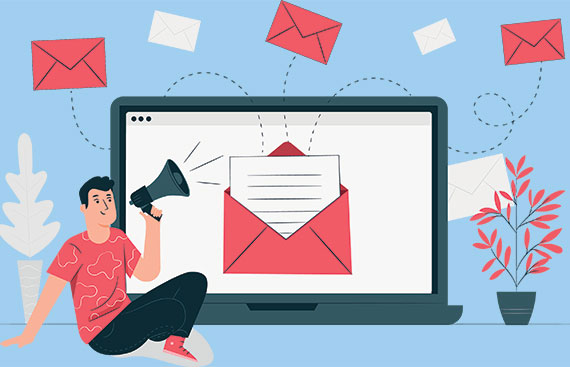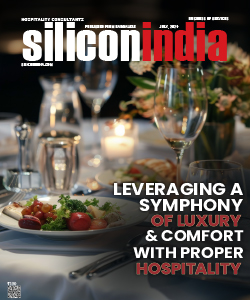12 Personalization Techniques That Will Enhance Your Email Marketing Campaigns

In today's world, people receive a lot of marketing messages every day, so it's important to make yours stand out. Using personalization is a great way to grab your audience's attention and get them involved. Personalized email marketing doesn't just increase how many people open and click on your emails but also helps build customer loyalty and boost sales.
This detailed guide looks at different ways you can personalize your email marketing to give your subscribers a more customized experience.
Understanding Personalization in Email Marketing
In email marketing personalization utilizes customer information to craft meaningful content designed to match individual tastes and actions. This approach extends beyond incorporating the recipient's name; it includes adjusting subject lines suggesting products and tailoring overall email interactions to connect with each reader. Successful personalization elevates interaction. Increases sales by ensuring emails feel distinctly pertinent.
For businesses on a budget, exploring Mailchimp cheaper alternatives can offer robust personalization features without high costs. By understanding and implementing personalization techniques, marketers can transform generic email blasts into compelling, individualized communications that foster deeper connections with their audience.
The Benefits of Personalization
- Increased Engagement: Personalized emails are more likely to be opened and clicked on because they resonate more with the recipient.
- Higher Conversion Rates: By addressing specific needs and preferences, personalized emails can drive more conversions.
- Improved Customer Loyalty: Personalization helps build stronger relationships with customers, leading to increased loyalty and retention.
- Reduced Unsubscribe Rates: Relevant content reduces the likelihood of subscribers opting out of your email list.
Techniques to Personalize Your Email Marketing Campaigns
1. Use Recipient’s Name
The simplest form of personalization is using the recipient’s name in the email. This small touch can make your emails feel more personal and less like generic marketing blasts.
How to Implement:
- Collect names during the sign-up process.
- Use merge tags in your email marketing platform to automatically insert the recipient’s name into the email.
2. Segment Your Email List
Segmentation involves dividing your email list into smaller groups based on specific criteria, such as demographics, behavior, or purchase history. This allows you to send more targeted and relevant content to each segment.
How to Implement:
- Use data from sign-up forms, purchase history, and website behavior to segment your email list.
- Create tailored email campaigns for each segment, addressing their specific needs and interests.
3. Dynamic Content
Dynamic content changes based on the recipient’s data. This allows you to create a single email template that delivers personalized content to different recipients.
How to Implement:
- Use your email marketing platform’s dynamic content feature to customize sections of your email based on subscriber data.
- For example, show different product recommendations to different segments based on their past purchases or browsing behavior.
4. Behavioral Trigger Emails
Behavioral trigger emails are sent based on specific actions taken by the recipient. These emails are highly relevant and timely, making them more likely to drive engagement and conversions.
How to Implement:
- Set up automated workflows that trigger emails based on specific actions, such as abandoned cart reminders, post-purchase follow-ups, or browsing behavior.
- Use your email marketing platform to track user behavior and send triggered emails accordingly.
5. Personalized Subject Lines
Personalized subject lines can significantly improve open rates. They catch the recipient’s attention and indicate that the email content is relevant to them.
How to Implement:
- Include the recipient’s name or reference a recent interaction in the subject line.
- Test different personalized subject lines to see which ones resonate best with your audience.
6. Location-Based Personalization
Geographic location can be a valuable data point for personalization. Tailor your email content based on the recipient’s location to make it more relevant.
How to Implement:
- Collect location data during the sign-up process or use IP geolocation to determine the recipient’s location.
- Send location-specific offers, event invitations, or weather-related content.
7. Personalized Product Recommendations
Personalized product recommendations based on past purchases or browsing behavior can drive repeat purchases and increase average order value.
How to Implement:
- Use your ecommerce platform’s data to track past purchases and browsing behavior.
- Include product recommendations in your emails based on this data.
8. Personalized Content Blocks
Personalized content blocks allow you to show different content to different segments within the same email template. This can include different images, copy, or offers.
How to Implement:
- Use your email marketing platform’s dynamic content feature to create personalized content blocks.
- Set rules for which content blocks are shown to which segments based on subscriber data.
9. Personalized Timing
Sending emails at the right time can improve open and engagement rates. Use data on when your subscribers are most active to personalize email send times.
How to Implement:
- Analyze past email performance to determine the best send times for different segments.
- Use your email marketing platform’s send time optimization feature to automatically send emails at the optimal time for each subscriber.
10. Personalized Email Frequency
Not all subscribers want to receive emails at the same frequency. Allowing subscribers to choose how often they receive emails can improve engagement and reduce unsubscribe rates.
How to Implement:
- Provide options for email frequency during the sign-up process or in the email preferences center.
- Segment your email list based on these preferences and send emails accordingly.
11. Anniversary and Birthday Emails
Sending personalized emails to celebrate anniversaries or birthdays can make subscribers feel valued and appreciated.
How to Implement:
- Collect birthdate and subscription anniversary data during the sign-up process.
- Set up automated workflows to send personalized birthday or anniversary emails with special offers or discounts.
12. Personalized Call-to-Actions (CTAs)
Personalized CTAs can drive higher engagement by aligning with the recipient’s interests and behavior.
How to Implement:
- Use dynamic content to customize CTAs based on subscriber data.
- Test different personalized CTAs to see which ones drive the most engagement.
Best Practices for Personalization
To ensure your personalization efforts are effective and well-received, follow these best practices:
- Keep Data Accurate and Up-to-Date
Ensure that the data you use for personalization is accurate and up-to-date. Regularly clean your email list and update subscriber information to maintain data quality.
- Test and Optimize
Continuously test different personalization techniques and optimize based on the results. A/B testing can help you determine which personalization strategies work best for your audience.
- Respect Privacy
Be transparent about how you collect and use subscriber data. Ensure that you comply with data protection regulations such as GDPR and provide options for subscribers to manage their preferences.
- Avoid Over-Personalization
While personalization is important, avoid going overboard. Overly personalized emails can come across as intrusive. Strike a balance between personalization and privacy.
- Focus on Value
Always prioritize providing value to your subscribers. Ensure that your personalized content is relevant, helpful, and aligned with their interests and needs.
Personalization is a powerful tool that can significantly enhance the effectiveness of your email marketing campaigns. By tailoring your content to the specific needs and preferences of your subscribers, you can boost engagement, drive conversions, and build stronger customer relationships.
Implementing the techniques outlined in this article will help you create more personalized, impactful email marketing campaigns that resonate with your audience. As you continue to refine your personalization strategies, remember to focus on providing value, respecting privacy, and using data responsibly to deliver the best possible experience for your subscribers.
Read More News :
Budget 2024-25: FM Sitharaman to Convene Pre-Budget Meeting with Industry Stakeholders on June 20
How to Find and Utilize Top Essay Examples by Topic for Academic Success



